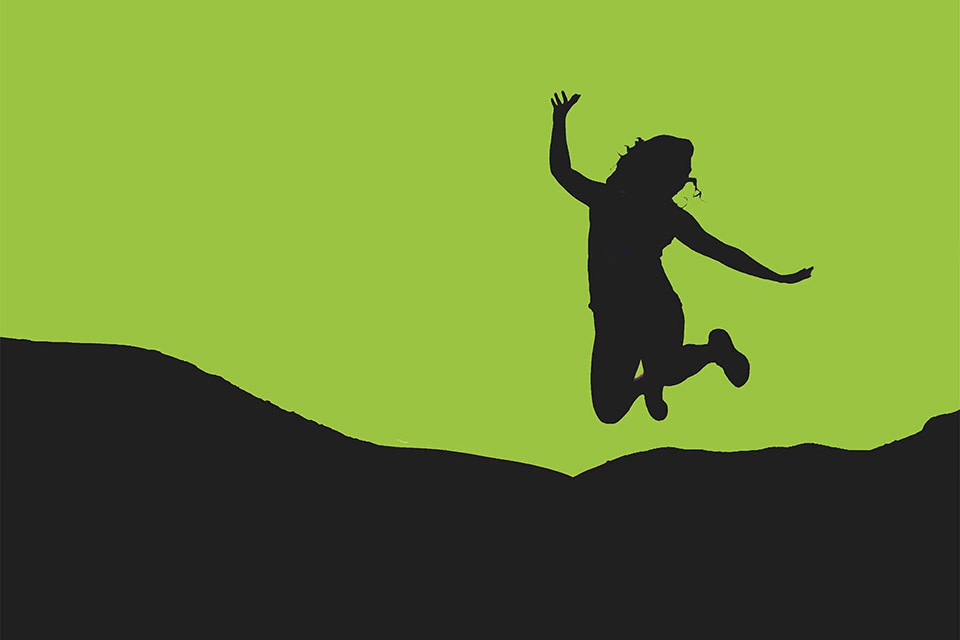Learning coaching, but agile
You’ll never walk alone.
Digitalisation, globalisation and accelerated development cycles mean that there is always something new to learn – especially in a professional context. The slogan of lifelong and self-regulated learning has been heard everywhere for years. Many conventional learning and educational approaches in companies no longer meet these new requirements. This raises the question: Why shouldn’t we also be agile in our learning?
The limits of conventional training approaches
Let’s take a look at what it might look like in practice in many companies. Sandra works in marketing for a medium-sized company. Together with her colleagues she was sent to a two-day seminar on search engine optimization (SEO). However, her enthusiasm for SEO was limited and Sandra already knew almost half of the training content. Only about a quarter of the content was really relevant and interesting for her. When Sandra has to lead the relaunch of a product homepage two months later, she realizes that she should learn more about User Experience (UX) soon. Because she had never had to organise the fundamental redesign of a website before. However, a training course for this will only take place again in three quarters of a year, which would be far too late. The optimisation for search engines associated with the relaunch, on the other hand, could have been done well without the SEO seminar. Sandra suspects that this expensive, operational further training measure has basically missed its purpose.
Maybe Sandra’s story reminds you of an experience you made yourself in a similar way. In conventional learning settings, continuing education measures are usually planned well in advance. There is hardly any room for rapid adaptation to current challenges. Employees often go through development programmes and use training formats that are usually only suitable to a limited extent for the individual and its individual learning needs and hardly respond to existing previous knowledge.
The dawn of a new era of learning
We at QualityMinds also found ourselves in a situation where we had to find new ways to learn due to some frustrating experiences. As an agile company, the idea was obvious to design the area of operational learning to be agile.
The concrete implementation of this idea quickly showed that it would be a radical step to turn our established practice upside down. Up to now, further training courses with internal and external training were almost exclusively focused on content and overarching teaching objectives. Participants then had to fit more or less into this structure, regardless of their individual needs and resources in the respective learning area. But if agility is to be taken seriously, this is exactly where it has to be applied. Isn’t the first principle of the agile manifesto “individuals and interactions over processes and tools”?
So in the future, we decided to focus on learning employees and to align the learning environment entirely with them. This also makes a lot of sense from the point of view of learning theory. Because what a learner needs, at what point in time and in what form can he usually best answer for himself. Learning is highly individual; it depends, for example, on the prior knowledge and interest of the learner as well as the type of learning objective. The switch to learner-centred approaches was therefore probably the biggest and most significant difference from our conventional understanding of learning.
Further differences became apparent when we subsequently began to develop a kind of guide to agile learning. Some aspects of this definition are old acquaintances from teaching and learning psychology, which have received little attention in the operational context so far. Other aspects arise from the familiar agile principles and frameworks such as Scrum.
The key points of the agile learning approach
The key points of the agile learning approach are as follows:
- The learner is at the centre, learning offers must be individualised, demand-oriented and practical.
- Personal responsibility and self-organisation are the important principles.
- Learning goals, materials, formats and settings are chosen independently.
- Teaching, exercise and practice are inseparably linked.
- Learners are personally accompanied by a learning coach.
- Collaborative and cooperative learning is a central component.
- The learning process is structured into manageable, iterative phases (learning sprints).
- Continuous feedback and accompanied reflection ensure rapid adaptivity.
Agile learning in the field
On paper, it reads good for now. But how can agile learning be put into action? In the first example it could look like this: Sandra’s goal is to consider important aspects of the user experience topic when relaunching the homepage and to do this she needs learning content as quickly as possible. However, she doesn’t really know where to start and who is a good contact person for the topic. Here her learning coach Michael supports her. In the coaching discussion he determines in cooperation with Sandra what learning needs she has and why. She also talks about her previous knowledge, i.e. what she already knows about UX and which concrete questions she has in the context of the homepage relaunch. After they have defined the learning goal, they discuss with each other how and by when Sandra wants to achieve her learning goal and what she needs for it.
Then Michael starts to act. He knows that there is a design department in the company that deals with UX on a daily basis. There he asks for basic literature and interesting blogs on the subject and, above all, for information on Sandra’s individual requirements. On this occasion, Michael also learns that a colleague in this department had previously been involved in a similar relaunch. She agrees to give Sandra – as soon as she has read her way into the topic – tips for practical implementation in her specific case.
So Sandra gets the appropriate learning content and formats at the right moment. It is thus closer to her actual needs and can be applied directly in practice. And for this external expertise was not even necessary. At the end of the agreed time Sandra and Michael meet again and take inventory: Has Sandra reached her goal? What went well, what didn’t? Which methods and materials were helpful? What could be improved in the next learning phase? And although the relaunch has been completed with very good feedback, Sandra comes to the conclusion that she even wants to deepen the topic UX in the next learning sprint.
The agile learning coach
So that our employees have the opportunity to follow their interests and try out completely new ways, we at QualityMinds have designed the role of an agile learning coach. The learning coach is primarily a reflection partner and facilitator – similar to the agile Scrum Master. In a learning coach session, he encourages the learner to reflect aloud on his or her interests, wishes or current challenges in the work and to gradually approach his or her learning needs and concretise them.
He helps the learner to formulate a learning goal depending on one’ s learning motivation, previous knowledge and learning preferences. In addition, the agile learning coach supports the organisation of the learning material, asks the learner about his preferred learning forms and settings and develops a learning strategy which is individually tailored to the learning objective and the framework. For one learner, networking with colleagues in a Community of Practice is a goal-oriented approach, another requires individual supervision or more specialised scientific literature.
After the learning interview, the learning phase or so-called learning sprint follows. This is characterised by a self-organised structure and a time limit. A learning sprint length of three months has proven to be useful. However, depending on the learning need and topic, the length of the learning sprint can also be shortened. During the learning sprint, the agile learning coach recalls the learning goals, asks whether he can support them, and gives helpful tips and tricks on learning strategies as required.
At the end of the learning sprint the learner meets with his learning coach and they check together in a retrospective whether the learning objective is still relevant, whether there are new learning objectives and what experience the learner has had in his/her learning sprint. Thus not only the learning content is discussed, but also the meta-level of learning. In contrast to conventional learning offers, agile learning promotes metacognitive abilities. Or put differently: Learners learn how to improve their own learning. These findings in turn help the learner to organise future learning sprints.
The benefits of agile learning
Agile learning provides value for the individual, the teams and the company – we have experienced this very concretely at QualityMinds. Learners report that they enjoy learning again, because they can finally concentrate on their individual learning goals and choose their learning formats and settings themselves. By means of jointly identified group learning goals, an entire team also has the opportunity to develop further as a group. And the concept is also demonstrably more efficient, because training courses only incur costs to the extent that they are really needed. Since no thinking or learning templates are given, agile learning supports the development of new topics and fresh ideas.
In the meantime, we have received so many enquiries from partner companies and from our network about our learning concept that we have opened our internal training as an agile learning coach to all interested parties. Since we would like to develop our approach continuously, we are pleased about each form of exchange. Write to us about your learning experiences at support-lerncoach@qualityminds.de.
Notes:
From QualityMinds you can find more articles in the t2informatik Blog:

Christine Föhr
Christine Föhr is Scrum Master and agile learning coach. She advises in the areas of agile learning, learning coaching and Scrum. After her studies in Educational Sciences (M.A.) she mainly worked as a conceptual designer for corporate learning content and concepts. She also has work experience in the field of IT user support.

Dr. Manuel Illi
Dr. Manuel Illi is a consultant in the field of agile learning, learning coaching and alternative forms of learning. He used to work as a Germanist and cultural scientist and is now a member of the QualityLearning team at QualityMinds. He has also organised numerous workshops and conferences on ethics, digital responsibility and media, diversity and public outreach.


